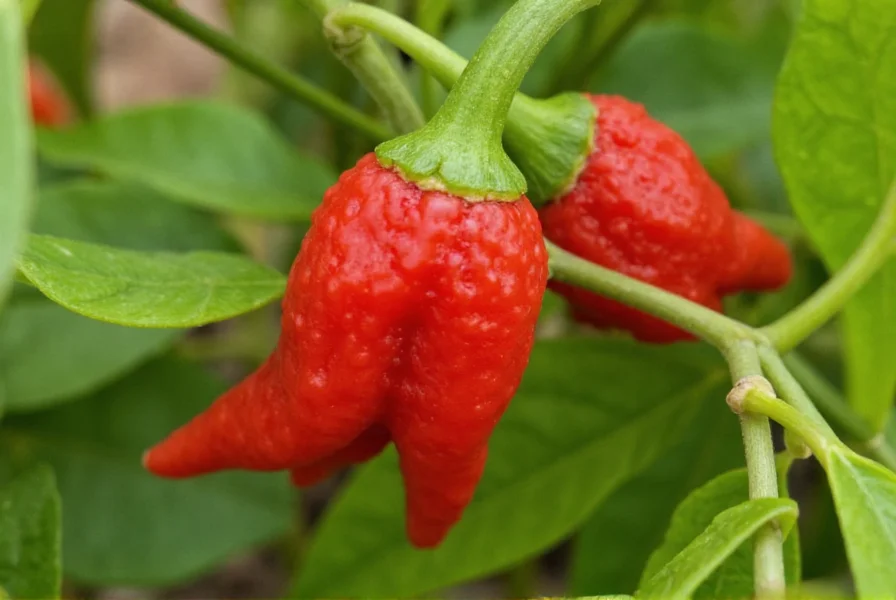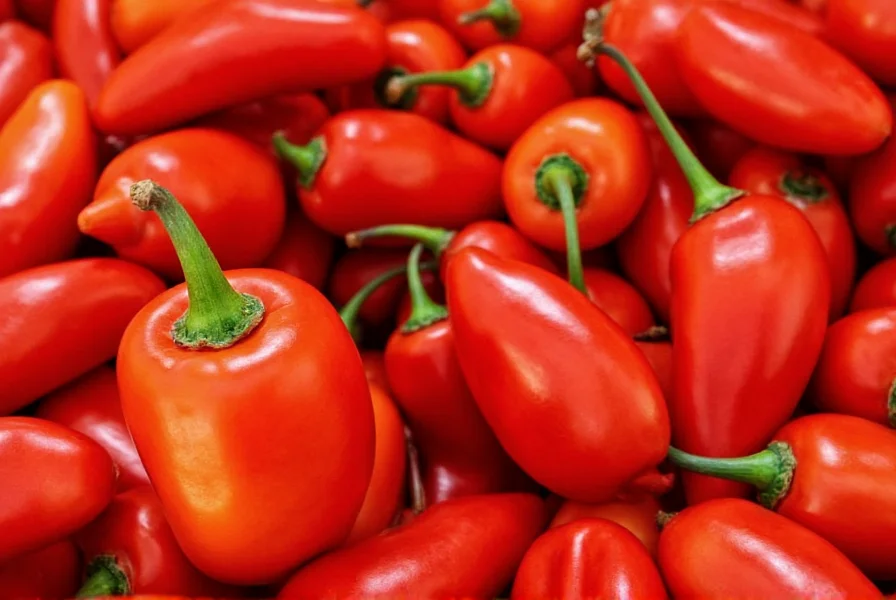The Carolina Reaper currently holds the official Guinness World Records title as the hottest chili pepper on Earth, with an average Scoville Heat Unit (SHU) rating of 1,641,183 and peak measurements exceeding 2.2 million SHU.
For spice enthusiasts and culinary adventurers, understanding the pinnacle of pepper heat is more than just a curiosity—it's a journey into the science of capsaicin, agricultural innovation, and human tolerance. The Carolina Reaper, officially certified by Guinness World Records since 2013, represents the current apex of cultivated chili heat.
Understanding the Scoville Scale: Measuring Pepper Heat
Developed by pharmacist Wilbur Scoville in 1912, the Scoville Organoleptic Test originally measured heat through human tasters diluting pepper extract until the burn became undetectable. Today, High-Performance Liquid Chromatography (HPLC) provides precise measurements of capsaicinoids—the compounds responsible for heat—in Scoville Heat Units (SHU).
A jalapeño typically ranges from 2,500-8,000 SHU, while the habanero sits around 100,000-350,000 SHU. The Carolina Reaper's staggering 1.6+ million SHU places it in a category requiring serious respect and proper handling protocols.
The Carolina Reaper: Anatomy of a Superhot
Bred by South Carolina grower Ed Currie of the PuckerButt Pepper Company, the Carolina Reaper (Capsicum chinense) is a cross between a Pakistani Naga and a Red Habanero. Its distinctive appearance features:
- Rough, bumpy texture with a characteristic "stinger" tail
- Bright red color when fully mature
- Approximately 1-2 inches in length
- Complex flavor profile with initial sweetness before intense heat

Record-Breaking Heat Verification
The official Guinness World Records certification came after rigorous testing at Winthrop University in 2012. Multiple samples were analyzed using HPLC, with results confirming the average heat level of 1,641,183 SHU. Some individual peppers from the same crop measured as high as 2,200,000 SHU.
"What makes the Carolina Reaper special isn't just its peak heat, but its consistency," explains Dr. Paul Bosland, director of the Chile Pepper Institute. "Many superhots have erratic heat levels, but the Reaper maintains extreme heat across multiple growing seasons and conditions."
Previous Hottest Chili Contenders
The title of world's hottest chili has changed hands several times in recent decades:
| Chili Pepper | Peak SHU | Record Period | Origin |
|---|---|---|---|
| Naga Viper | 1,382,118 | 2010-2012 | UK (crossbreed) |
| Trinidad Scorpion Butch T | 1,463,700 | 2011-2012 | Trinidad |
| Carolina Reaper | 2,200,000 | 2013-Present | South Carolina, USA |
| Pepper X (unofficial) | 3,180,000 | N/A | South Carolina, USA |
Pepper X: The Unofficial Challenger
Ed Currie, the same breeder behind the Carolina Reaper, claims his newer creation "Pepper X" reaches 3.18 million SHU—nearly 50% hotter than the Reaper. However, Guinness World Records has not yet certified these measurements due to insufficient independent verification.
"The challenge with verifying extreme heat claims is maintaining scientific rigor," notes Dr. Josh Colvin, a food scientist specializing in capsaicinoids. "Many amateur tests lack proper controls, and the natural variation within pepper crops makes single-sample claims unreliable."
Safety Considerations for Handling Superhot Peppers
Working with peppers at this heat level requires serious precautions:
- Always wear nitrile gloves (latex won't protect against capsaicin)
- Use eye protection to prevent accidental contact
- Work in well-ventilated areas to avoid inhaling capsaicin particles
- Have dairy products (milk, yogurt) on hand to neutralize burns
- Never touch your face while handling superhots
Medical professionals report increasing cases of "thunderclap headaches" and temporary blood pressure spikes from extreme chili challenges. The current understanding of what is the scoville rating of the world's hottest pepper must include these safety considerations for responsible consumption.
The Science Behind Extreme Heat
Pepper heat comes from capsaicin and related compounds called capsaicinoids. The Carolina Reaper's extreme heat results from:
- Genetic selection for maximum capsaicin production
- Stress-induced cultivation techniques (water restriction, temperature extremes)
- Specific growing conditions that trigger defense mechanisms in the plant
Researchers at New Mexico State University have found that capsaicin production serves as the plant's defense against fungal pathogens—a fascinating evolutionary adaptation that humans have selectively bred to extreme levels.
Practical Uses of the World's Hottest Chili
Despite its extreme heat, the Carolina Reaper has legitimate culinary applications:
- Specialty hot sauces (used in minute quantities)
- Pharmaceutical research for pain management
- Pepper spray formulations (though military/law enforcement typically uses synthetic capsaicin)
- Flavor enhancement in small amounts for complex heat profiles
"Most professional chefs use the Reaper not for pure heat, but for its unique flavor dimension," explains Chef Maria Rodriguez, who specializes in chili-based cuisine. "When used properly, it adds depth you can't achieve with milder peppers."
Common Misconceptions About the Hottest Chili
Several myths persist about superhot peppers:
- Myth: The hottest part is the seeds
Fact: Capsaicin is concentrated in the placenta (white pith), not the seeds - Myth: Drinking water helps with the burn
Fact: Water spreads capsaicin; dairy or sugar-based solutions are more effective - Myth: Heat tolerance can be permanently increased
Fact: Tolerance is temporary and resets after periods without exposure
The Future of Superhot Peppers
Breeding programs worldwide continue pushing heat boundaries, though many researchers question the practical value of peppers beyond 2 million SHU. "At a certain point, the human palate can't distinguish additional heat," explains Dr. Bosland. "We're approaching the biological limits of what's useful for culinary applications."
As genetic research advances, we may see peppers with more consistent heat levels or novel flavor-heat combinations rather than pure heat escalation. Understanding how is the hottest chili pepper measured will continue evolving with analytical technology.
What is the exact Scoville rating of the Carolina Reaper?
The Carolina Reaper has an average Scoville Heat Unit (SHU) rating of 1,641,183, with individual peppers measuring up to 2.2 million SHU. This official measurement comes from testing conducted at Winthrop University and verified by Guinness World Records.
Is Pepper X officially recognized as the hottest chili?
No, Pepper X has not been officially recognized by Guinness World Records as the hottest chili. While its creator claims 3.18 million SHU, these measurements lack the independent verification required for official certification. The Carolina Reaper remains the officially recognized hottest chili.
How dangerous is the Carolina Reaper to consume?
While not lethal in normal consumption amounts, the Carolina Reaper can cause significant discomfort including intense burning sensation, sweating, nausea, and in rare cases, temporary blood pressure spikes. Medical professionals have reported cases of "thunderclap headaches" from extreme chili challenges. Proper handling with gloves and eye protection is essential when preparing.
What's the difference between Carolina Reaper and Pepper X?
Both were developed by Ed Currie of PuckerButt Pepper Company. The Carolina Reaper is officially recognized at 1.6+ million SHU, while Pepper X claims 3.18 million SHU but lacks official certification. Pepper X reportedly has a slightly different flavor profile with more fruitiness before the intense heat hits, but both require extreme caution when handling.
Can you grow Carolina Reaper peppers at home?
Yes, Carolina Reaper plants can be grown at home in warm climates or in containers indoors. They require 90-120 days to mature, plenty of sunlight, and careful watering. Gardeners should use gloves when handling the plants and peppers. The plants are relatively disease-resistant but need protection from extreme temperature fluctuations for optimal heat development.











 浙公网安备
33010002000092号
浙公网安备
33010002000092号 浙B2-20120091-4
浙B2-20120091-4